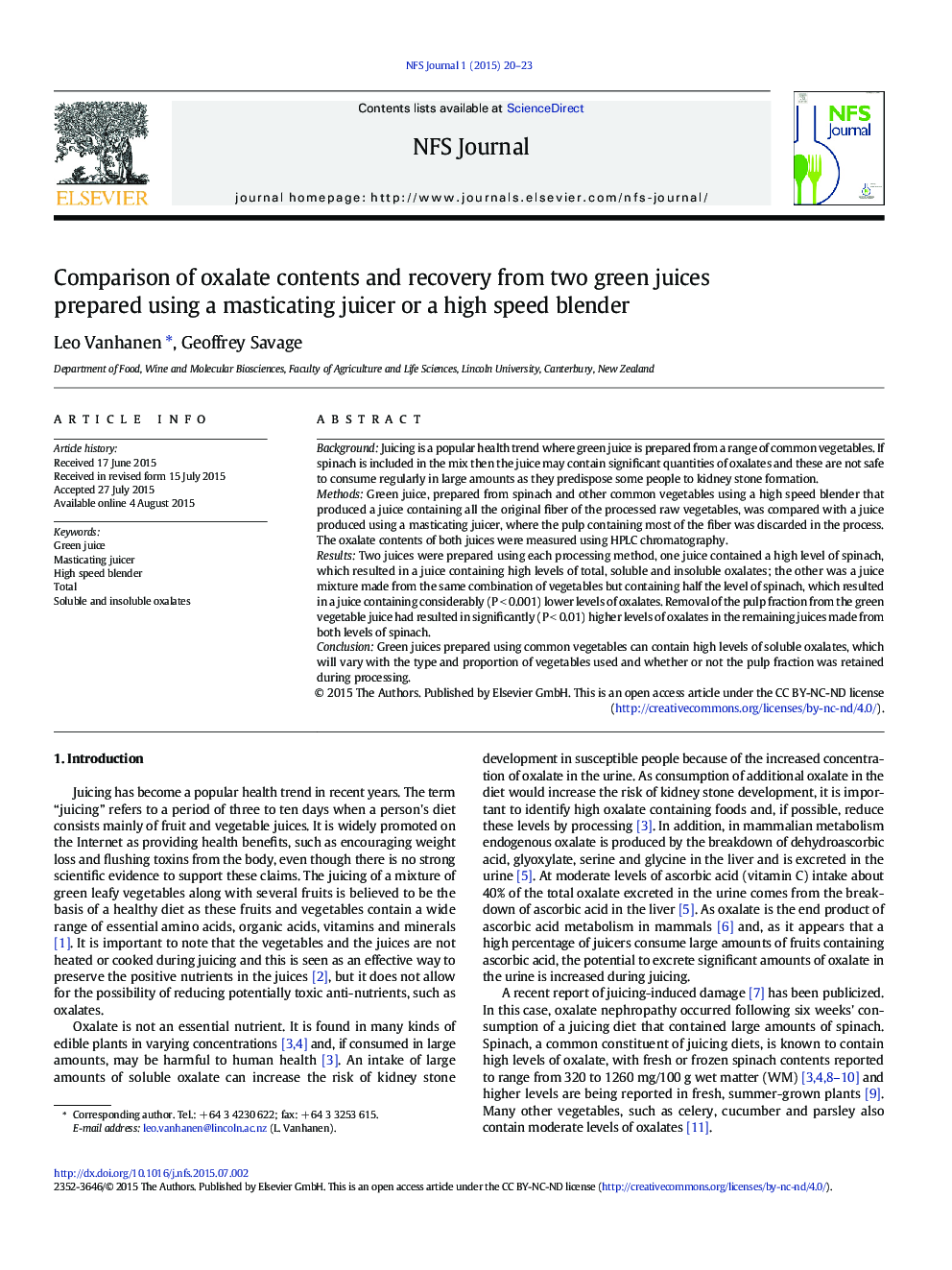| Article ID | Journal | Published Year | Pages | File Type |
|---|---|---|---|---|
| 1085621 | NFS Journal | 2015 | 4 Pages |
BackgroundJuicing is a popular health trend where green juice is prepared from a range of common vegetables. If spinach is included in the mix then the juice may contain significant quantities of oxalates and these are not safe to consume regularly in large amounts as they predispose some people to kidney stone formation.MethodsGreen juice, prepared from spinach and other common vegetables using a high speed blender that produced a juice containing all the original fiber of the processed raw vegetables, was compared with a juice produced using a masticating juicer, where the pulp containing most of the fiber was discarded in the process. The oxalate contents of both juices were measured using HPLC chromatography.ResultsTwo juices were prepared using each processing method, one juice contained a high level of spinach, which resulted in a juice containing high levels of total, soluble and insoluble oxalates; the other was a juice mixture made from the same combination of vegetables but containing half the level of spinach, which resulted in a juice containing considerably (P < 0.001) lower levels of oxalates. Removal of the pulp fraction from the green vegetable juice had resulted in significantly (P < 0.01) higher levels of oxalates in the remaining juices made from both levels of spinach.ConclusionGreen juices prepared using common vegetables can contain high levels of soluble oxalates, which will vary with the type and proportion of vegetables used and whether or not the pulp fraction was retained during processing.
